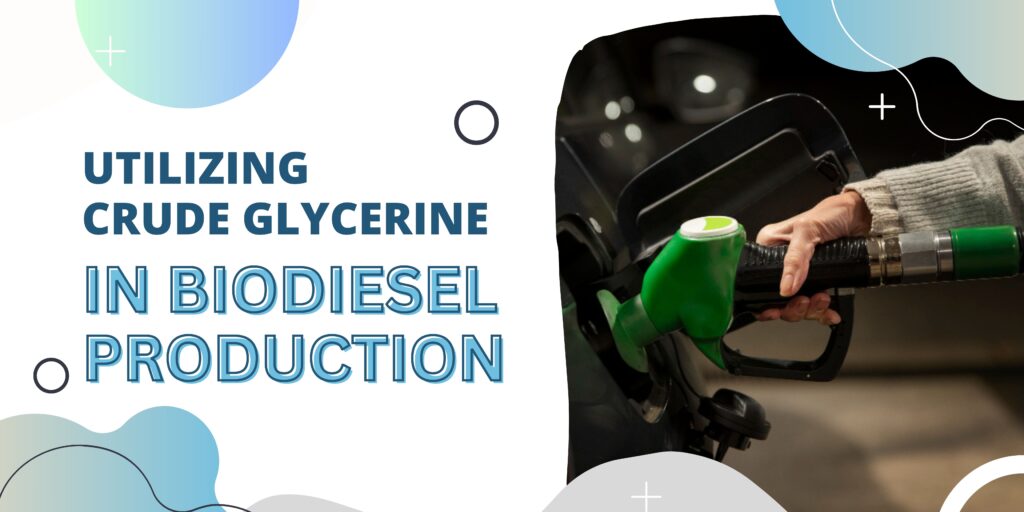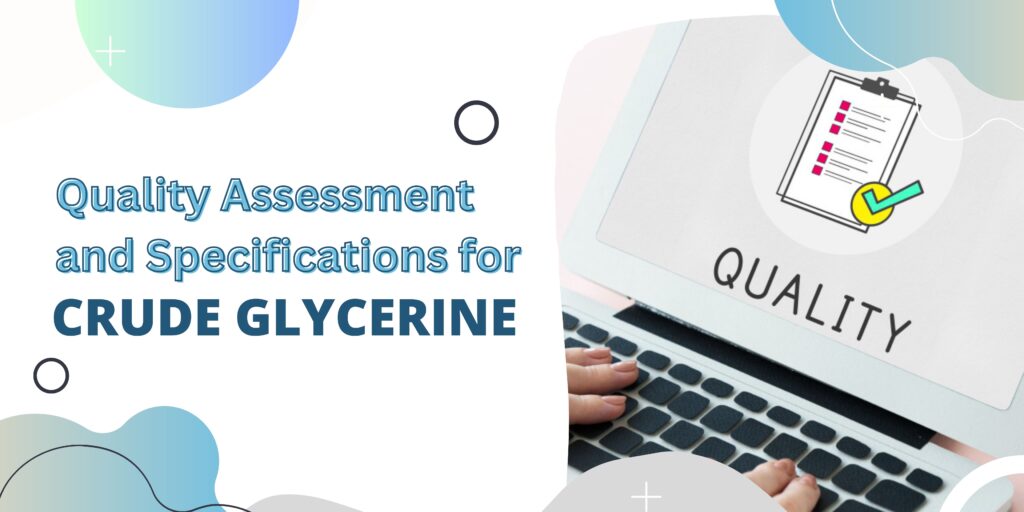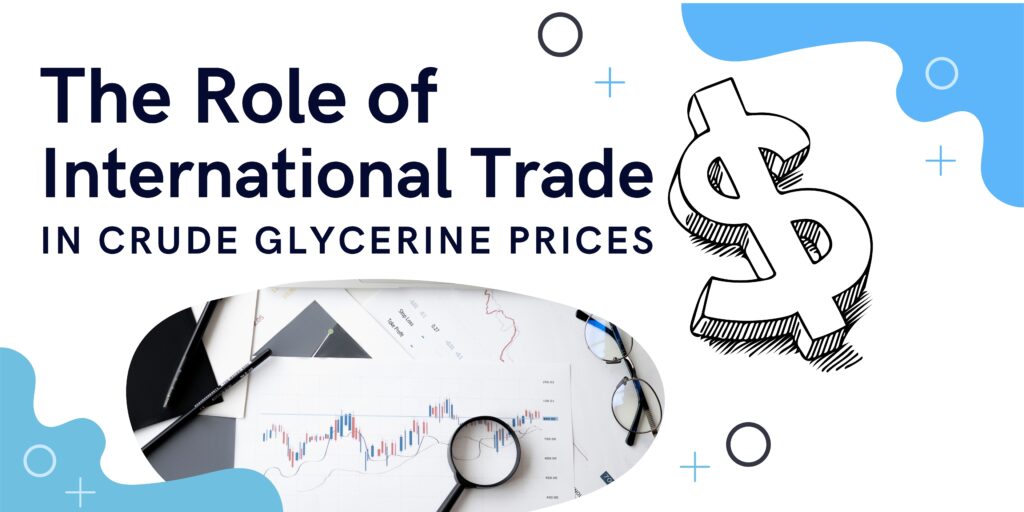
The research of alternative fuels has been prompted by the search for ecologically friendly and sustainable energy sources, with biodiesel emerging as a promising contender. A sustainable and cleaner-burning fuel, biodiesel has attracted a lot of interest lately. Utilizing crude glycerine, a byproduct of the biodiesel synthesis, is an important part of producing biodiesel. In this article, we examine the advantages and difficulties of using crude glycerine in the manufacturing of biodiesel, illuminating its importance to the long-term viability of the biodiesel industry.
Understanding Biodiesel Production
Before we discuss the role of crude glycerine in biodiesel production, it’s essential to have a clear understanding of the biodiesel production process. Biodiesel is typically produced through a chemical reaction called transesterification. This process involves the conversion of triglycerides, commonly found in vegetable oils or animal fats, into biodiesel and glycerol. The simplified chemical reaction is as follows:
Triglycerides + Alcohol → Biodiesel + Glycerol
This reaction is typically catalyzed by an alkali such as sodium or potassium hydroxide. The resulting biodiesel and crude glycerine are then separated.
The Role of Crude Glycerine
Crude glycerine, also known as glycerol, is a key byproduct of the biodiesel production process. It is called “crude” glycerine because it contains impurities, unreacted methanol or ethanol, and some residual catalyst from the transesterification process. Crude glycerine needs further refinement to become a marketable product, typically refined to pharmaceutical or industrial grades. However, in its crude form, glycerine can be effectively utilized in various ways, and one of its primary applications is within the biodiesel industry.
Benefits of Utilizing Crude Glycerine in Biodiesel Production
Waste Minimization: One of the most significant advantages of utilizing crude glycerine is the reduction of waste in the biodiesel production process. Without a viable use for the crude glycerine co-product, it would have to be disposed of, potentially contributing to environmental concerns. By finding valuable applications for crude glycerine, biodiesel producers can reduce waste and increase the overall sustainability of the biodiesel production process.
Economic Value: Producers of biodiesel may be able to earn extra money from crude glycerine. Although the raw form of glycerine might not be as valuable as refined glycerine, it can still be bought and sold or used in a variety of ways, supporting the economic viability of biodiesel production. In some circumstances, the income from crude glycerine might help cover some of the costs of production, improving the market competitiveness of biodiesel.
Biodiesel Production Efficiency: The use of crude glycerine can enhance the efficiency of the transesterification process. By providing a means to remove glycerol, unreacted alcohol, and catalysts from the reaction mixture, crude glycerine helps produce higher-quality biodiesel. It contributes to the overall yield and quality of the biodiesel product.
Reduced Environmental Impact: Compared to conventional diesel fuels, biodiesel is frequently promoted as being more environmentally benign. The manufacture of biodiesel has less of an impact on the environment by effectively using crude glycerine and reducing waste. This is in line with the overarching objective of increasing sustainability and lowering carbon emissions.
Versatility: Crude glycerine is a versatile substance that can be used in various industries, including pharmaceuticals, cosmetics, and food. Its versatility provides biodiesel producers with opportunities to explore diverse revenue streams by selling crude glycerine for these applications.
Challenges and Considerations
While there are several benefits to using crude glycerine in biodiesel production, it’s not without its challenges and considerations:
Quality Variation: Crude glycerine quality can vary significantly from one biodiesel production process to another. This can pose challenges for its utilization in downstream applications, as the impurity content may differ.
Impurities: As mentioned earlier, crude glycerine contains impurities, such as residual catalysts and unreacted alcohol. These impurities need to be removed or reduced to make the crude glycerine suitable for various applications.
Market Fluctuations: The market for crude glycerine can be volatile, with prices influenced by factors such as supply and demand and the quality of the product. Biodiesel producers may need to adapt to fluctuations in the glycerine market.
Refining Costs: If biodiesel producers intend to refine crude glycerine to higher grades for specific applications, additional refining costs and equipment may be required, affecting the economic feasibility of glycerine utilization.
Regulatory Compliance: Depending on the intended use, crude glycerine may need to meet specific regulatory standards. Ensuring compliance with these standards can be a complex process.
Competing Uses: Glycerine is a valuable product in its own right, with applications in various industries. The biodiesel industry may face competition from other sectors for the use of crude glycerine.
The Future of Crude Glycerine in Biodiesel Production
In the upcoming years, it is anticipated that the utilization of crude glycerine in the manufacturing of biodiesel will change. The production of glycerine as a byproduct increases in tandem with the growth in demand for biodiesel. Future improvements in refining techniques might make it possible to use crude glycerine in a variety of applications more effectively. The following areas are anticipated to receive the most attention from researchers and industry stakeholders:
Refinement and Purification: Advancements in refining technologies will be essential to improve the quality of crude glycerine and make it more suitable for a broader range of applications.
Market Diversification: The biodiesel industry will explore new markets and applications for crude glycerine to ensure its continued economic viability.
Sustainability and Environmental Impact: The emphasis on reducing environmental impact will lead to more efficient use of crude glycerine, minimizing waste and carbon emissions.
Regulatory Standards: The establishment of clear regulatory standards for crude glycerine quality will provide a framework for its use in various industries.
Conclusion
The manufacture of crude glycerine, a byproduct of biodiesel, significantly contributes to the industry’s sustainability and financial viability. Utilizing it results in less waste, more money, more efficient biodiesel production, and a smaller environmental impact, among other advantages. But issues like varying quality, contaminants, and market volatility must be resolved.
Crude glycerine has the potential to expand into new markets and applications as the biodiesel industry expands and changes. Future prospects for this co-product appear bright thanks to continuous glycerine refinement and purification research and development, ensuring that it will continue to be an important resource in the hunt for cleaner and more sustainable energy solutions.




